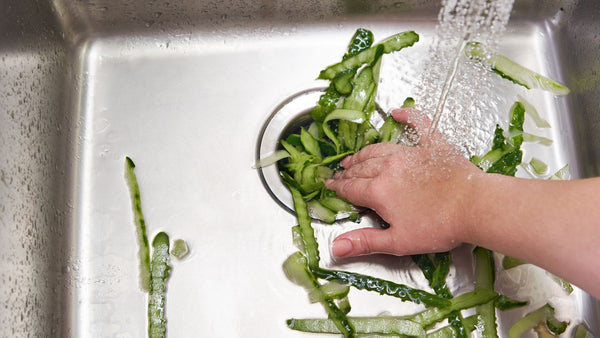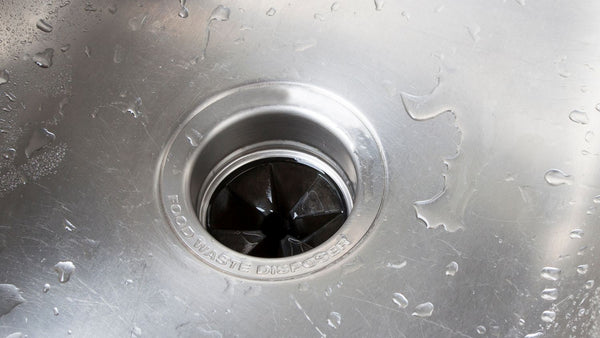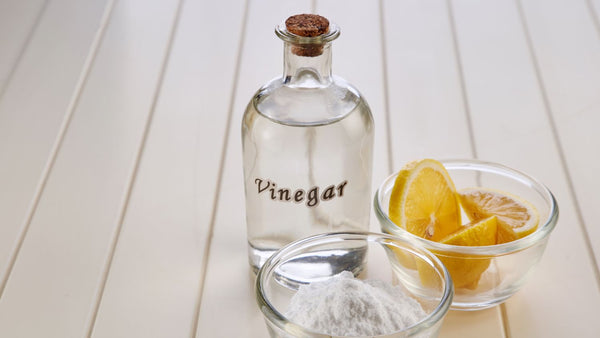Garbage disposals can get smelly and need to be cleaned to prevent it from turning into a haven for bacteria or mold. Garbage disposals should be cleaned once a week if used every day to stop odors and bacteria buildup from stuck food scraps. So, how do you clean a garbage disposal?
Remove and scrub the splash guard with soap and a brush. Next, remove larger debris with tongs or pliers. Sprinkle baking soda inside the disposal, add vinegar, then let it sit for 10 minutes. Follow this by grinding ice and salt in the disposal to sharpen the blades and remove buildup. Finally, chop some lemon peels up and grind them up for a fresh scent. If you have a Sepura (composting garbage disposal), the interior cleans itself, simply empty and rinse the odor-proof compost bin.
Why a Clean Garbage Disposal Matters
Most food scraps get sent through your pipes into your local sewage system from your disposal, but some linger behind, clinging to the nooks and crannies, only to decay over time. Fats and fibrous foods can also contribute to a grimy buildup, making your disposal a hotspot for bacterial growth.
Among other benefits, this is another reason customers choose Sepura - this high-tech food disposal cleans its interior on its own. The only maintenance required is to rinse and clean the compost bin. Sepura sends all food scraps washed down your sink into an odor-proof compost bin while only liquids drain, keeping your kitchen clean and tidy while allowing you to collect compostable organics without touching, seeing, or smelling your food scraps.

6 Steps to Cleaning a Sink Disposal
Cleaning your disposal is straightforward and doesn't need anything fancier than what you've already got in your pantry. Here's a simple, natural method to keep it in tip-top shape.
Step 1: Power Off
Safety first! Ensure the disposal is powered off by unplugging it or flipping the switch on your breaker box. Always double-check by trying to run the disposal to confirm it's off.

Step 2: Tackle the Splash Guard
That rubbery splash guard is a hotspot for grime. Remove it and give it a thorough scrub with dish soap and an old toothbrush, focusing on those hard-to-reach spots.
Gently pull on the edges of the splash guard to see if it's designed to come out easily. Many models have a splash guard that simply fits into place and can be removed by pulling it upwards. Some might be a bit snug, so work your way around the edges, gradually loosening it.
If your splash guard doesn't pull off, check your sink disposal's user manual or contact customer support to see how to remove it.
Step 3: Clear Out Debris
With the guard off, peek inside with a flashlight to spot any rogue food particles. Use tongs or pliers (never fingers!) to remove any debris you find.
Step 4: Baking Soda and Vinegar
Sprinkle half a cup of baking soda into the disposal and let it sit to neutralize odors. Follow up with a cup of vinegar, watch the fizz work its magic for a few minutes, then rinse with hot water.
Step 5: Ice and Salt Scrub
Reinstall the splash guard, plug the disposal back in, and fill it with two cups of ice and a cup of salt. Run cold water and switch on the disposal to let the ice and salt combo scrub the blades clean.

Step 6: Lemon Peels
Finish off by grinding chopped-up citrus peels (lemon is a favorite) in the disposal with cold water running. This leaves your sink smelling fresh and your disposal clean.
Keeping It Fresh
A clean disposal is key to a hygienic kitchen. By incorporating these steps into your cleaning routine, you'll not only extend the life of your disposal but also keep your kitchen smelling great. If you’re tired of a smelly garbage disposal and constant cleaning, check out our composting garbage disposal! Food washed down your sink is sent to an odor-eliminating compost bin while only liquids enter your plumbing and sewer system. Using Sepura keeps your pipes clear, and the planet happy.


